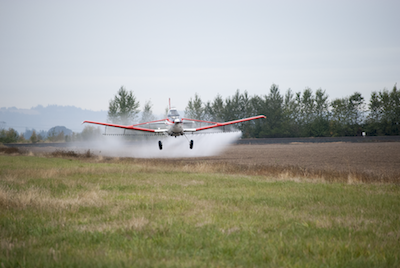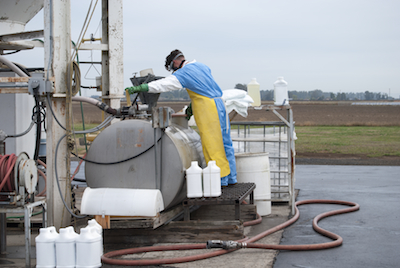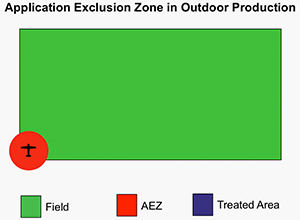How do I comply with WPS when working with an aerial applicator?

The aerial application business is a commercial pesticide handler employer (CPHE), also known as a custom applicator. While you have the responsibility to provide protections to your employed workers and pesticide handlers, the CPHE has the responsibility to provide protections to their employed pesticide handlers (i.e., pilots).
Employer Information Exchange
The CPHE must provide you with information about any pesticide applications planned on your agricultural establishment. This exchange of information will give you the opportunity to inform your employees and contracted laborers. In addition, you need the information for record-keeping and the central display area.
View More
View Less
Information a Commercial Pesticide Handler Employer Must Provide to You
To allow you to inform workers on the establishment about an ongoing or planned pesticide application, the CPHE must inform the agricultural employer of the following:
- Specific location and description of the area(s) on the agricultural establishment that are to be treated with a pesticide,
- Date, start, and estimated end times of the application,
- Product name, EPA registration number, and active ingredient(s),
- Restricted-entry interval (REI) for the pesticide,
- Whether the pesticide labeling requires posting, oral notification, or both to be conducted by the agricultural employer, and
- Any other specific requirements on the pesticide labeling concerning protection of workers and other persons during or after application.
What if the information changes?
The CPHE must provide you with updated information prior to application when there are any changes to:
- The location to be treated
- REI
- Method of notification
- Labeling requirements to protect workers/other persons
- The start time if earlier than estimated
Changes to the estimated application end time of less than one hour do not need to be reported to the agricultural employer.
If the product information changes or there are other changes to the date, start and end time, the CPHE must provide you with the updated information within 2 hours after completing the application.

Providing Information to the Commercial Pesticide Handler Employer
In the unlikely event that the aerial applicator will enter or walk on the establishment, you must provide certain information to the CPHE about treated areas. The purpose of this exchange of information is to ensure that commercial pesticide handlers are aware of areas under active Restricted-entry intervals (REIs) close to where he/she will be working.
- Inform the CPHE about treated areas and any restrictions on the establishment.
- You must provide to the CPHE:
- Specific location and description of any treated areas on the agricultural establishment under a REI that the commercial pesticide handler may be in (or walk within 1/4 mile of), and Any restrictions on entering those areas.
- The CPHE must provide that information to the commercial pesticide handler(s).
View More
View Less
Posting of Treated Sites, Oral Warnings, and Displaying Application and Hazard Information
Based on the information provided by the CPHE, you must post the treated site with designated WPS warning signs and/or provide oral warnings to your own workers with specific information on the location and description of any treated areas under an REI, the dates and times of restricted entry and instructions to stay out of the treated areas.
Additionally, you must record and display the pesticide application record(s) and safety data sheets for each pesticide application conducted by the CPHE if you have workers or handlers that will be on your establishment within 30 days of the application.

Application Exclusion Zone
It is your responsibility to keep workers and others out of the treated area and out of the application exclusion zone (AEZ) during pesticide applications. All pesticide applications conducted by fixed wing aircraft or helicopter must have an AEZ of 100 feet in all directions from the aircraft as it makes the application.
A pesticide cannot be applied, or a suspended application cannot be resumed, while any worker or other person on the establishment is within the AEZ on your own property or you will be in violation of the WPS.
View More
View Less
Learn more:

Regulatory Guidance
Browse brief guides about protections for workers and handlers, the AEZ, posting, PPE, exemptions, training, respirators, and more, in English and Spanish.